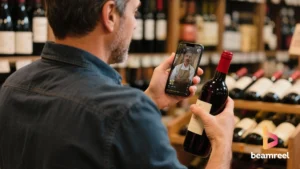

In the retail world, few stories capture the emotional and strategic tension better than the recent Sydney Morning Herald piece on Australia’s iconic department stores, Myer and David Jones. For decades, these stores were more than shops – they were stage sets for ritualised shopping, family memories, and the social pageantry of retail. The article would remind many of those moments that stick – being taken to Myer for high tea, the sparkle of window displays, the buzz of store crowds, and the sense that shopping itself was an experience.
That rich emotional backdrop is exactly what brands today can (& should) tap into with video. The real opportunity lies in using video not just to evoke nostalgia, but to connect it with the now – especially for younger audiences who don’t carry those same memories.
The article’s best lines: “It’s hard to think of another institution so deeply etched into our collective memory… a shared cultural backdrop” (Grace Bros/Myer and equally David Jones). These memories aren’t just about product, but about feeling. Video is uniquely capable of delivering that emotion – through movement, sound, storytelling, ambient detail. For legacy brands (or younger brands inspired by heritage), creating narrative video that references rituals, moments, sensory memories (the scent of perfume, the bustle of store crowds, the ritual of high tea) brings that emotion alive. And as research shows, nostalgia can be a powerful driver of positive affect and emotional connection.
While Myer and David Jones have legacy memories, the strategic challenge they face is engaging Gen Z and younger shoppers. The article notes that younger customers’ habits are quite different: digital-first, influencer-driven, experience-driven. Video offers the bridge. Nostalgia doesn’t mean “look at our old store” – it means “look how our story connects to you, today”. A video brand story might start with heritage, but pivot to how that heritage enables modern innovation – loyalty programmes, new services, new brands. In this way, the memory becomes context, not constraint.
The article emphasises how department stores used to offer spectacle: store windows, restaurants, fashion shows. In a sense they were “theatre”. Today’s brands can replicate the essence of that through video – immersive, story-driven, intentionally crafted. Think: behind-the-scenes of a store relaunch, customer stories, loyalty programme testimonials, influencer-led video tours of new offers. Each video becomes a moment of connection. For Gen Z especially, who crave experiences, video is the experience in micro form.
Both Myer and David Jones are investing in digital loyalty, personalisation and data-driven experiences. The article quotes David Jones’s CEO: “We want to create warm connections … drive customer lifetime value … most of all, we want to drive loyalty.” Video supports that ambition: personalised video messages, segmented video content for different customer cohorts, interactive video experiences. It’s one thing to feel nostalgic or emotionally connected – it’s another to convert it into meaningful engagement and loyalty behaviours.
For any brand – whether a legacy retailer, a niche brand, or a challenger – there’s a clear strategic arc:
Our Wrap up: the emotional power of memory is not just for the past. For brands today, the magic lies in translating heritage into relevance – and video is the perfect medium to do just that. By weaving the kind of stories that retailers like Myer and David Jones have long held in their vaults – and aligning them with the digital and experiential expectations of Gen Z – brand video can become the bridge between fond memories and future engagement.
Let’s make your brand story not just remembered, but acted upon.